Authored by Przemyslaw Narowski, CAE Engineer at Blackcad Engineering

- Customer: Blackcad Engineering
- Country: Poland
- Industry: Medical
- Solutions: Moldex3D Professional Package, Studio, Optics, Viscoelasticity, Flow, Pack
Blackcad Engineering’s main goal is to continually strive to develop and expand their skills and services. They also continue investing in simulation and optimization systems and the latest 3D scanning and 3D printing technologies. Blackcad Engineering is also recruiting new experienced staff in order to offer customers a full range of engineering services at the highest level. (Source: https://blackcad-engineering.com/)
Executive Summary
In the current time of the coronavirus pandemic, many institutions participate in the so-called “COVID-19 Response Initiative”. The idea has its manifestation in the industry as a massive production of personal protection equipment (PPE) such as masks and face shields. The idea for this particular product came from the need for a fast, one-step production of the face shield, which was previously assembled from at least three components: a shield, head cap, and strap. Blackcad’s design aimed to be a ready to use product possible to wear directly after the injection molding process.
Challenges
- Creating a moldable design of a product which is currently stamped or 3D printed
- Assuring proper optic properties of the face shield which determine adequate comfort of usage
Solutions
Moldex3D Professional was utilized not only to model the system to identify the typical molding process defects like excessive sprue pressure value but also to simulate optic properties of the injection molded parts and eliminate the defects.
Benefits
- Early detection of defects which made injection molded parts impossible to manufacture
- Successfully identified optic defects which made the product hard to use
- Helping people to fight back the pandemic
Case Study
In this project, Blackcad tried to design an injection-molded face shield which can be directly “wrapped” on a human head and be used almost instantly after the injection molding process – without assembling any additional parts.
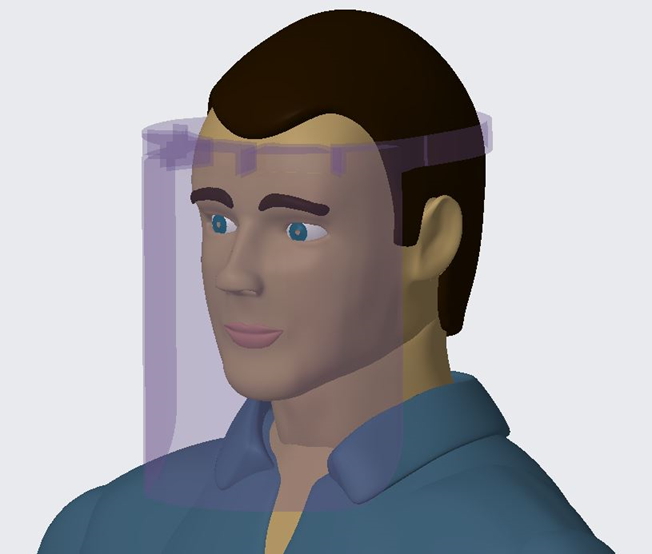
First, a standard FPW (Flow, pack and warp) simulation was run. In this simulation, we noticed a very high peak value of the sprue pressure (136 MPa).
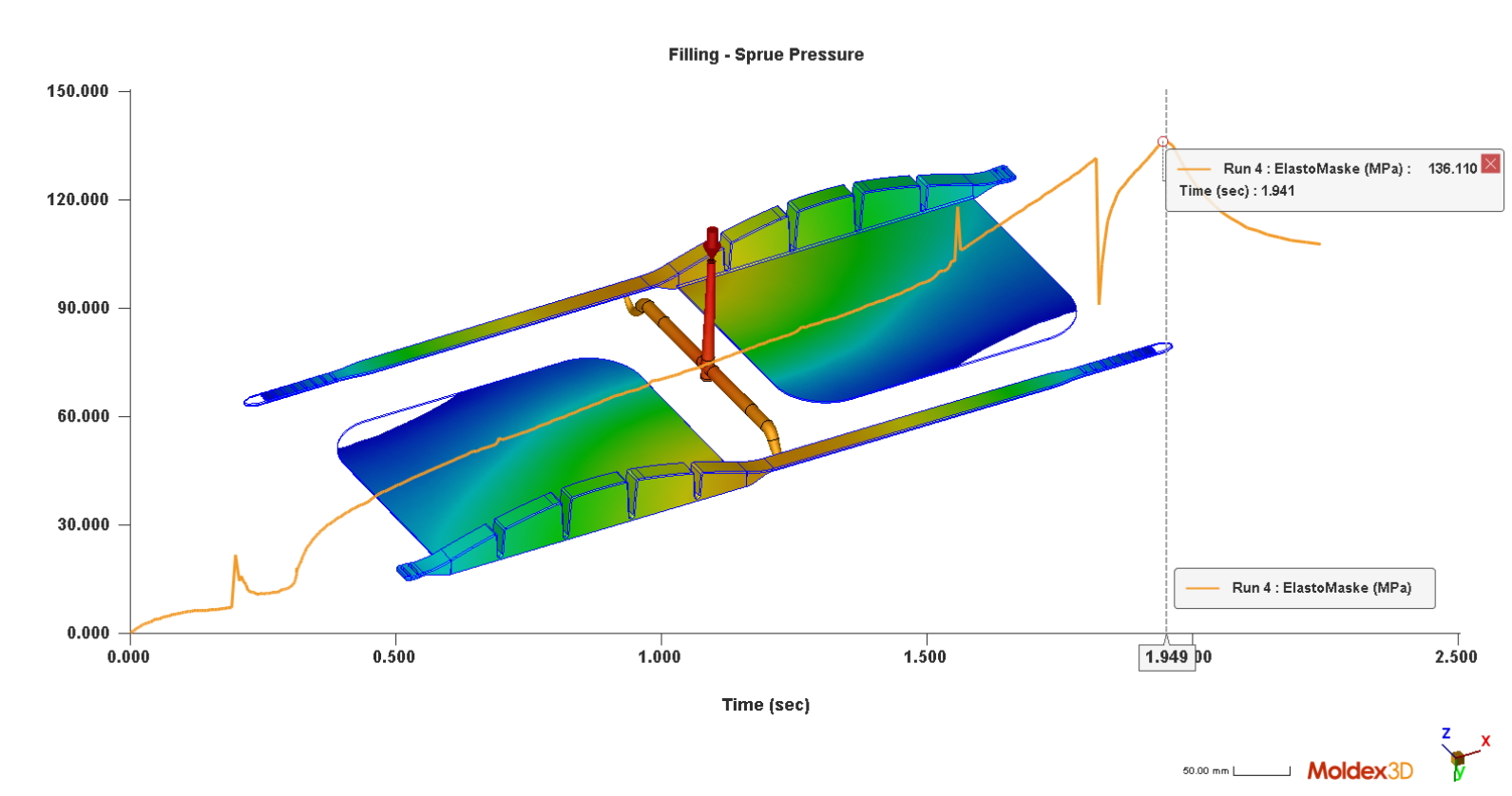
Therefore, the overall wall thickness had been changed from 1.5 mm to 2.0 mm, and a new FPW simulation was done. This time Blackcad got a slightly better sprue pressure result, but unfortunately a short shot as well.
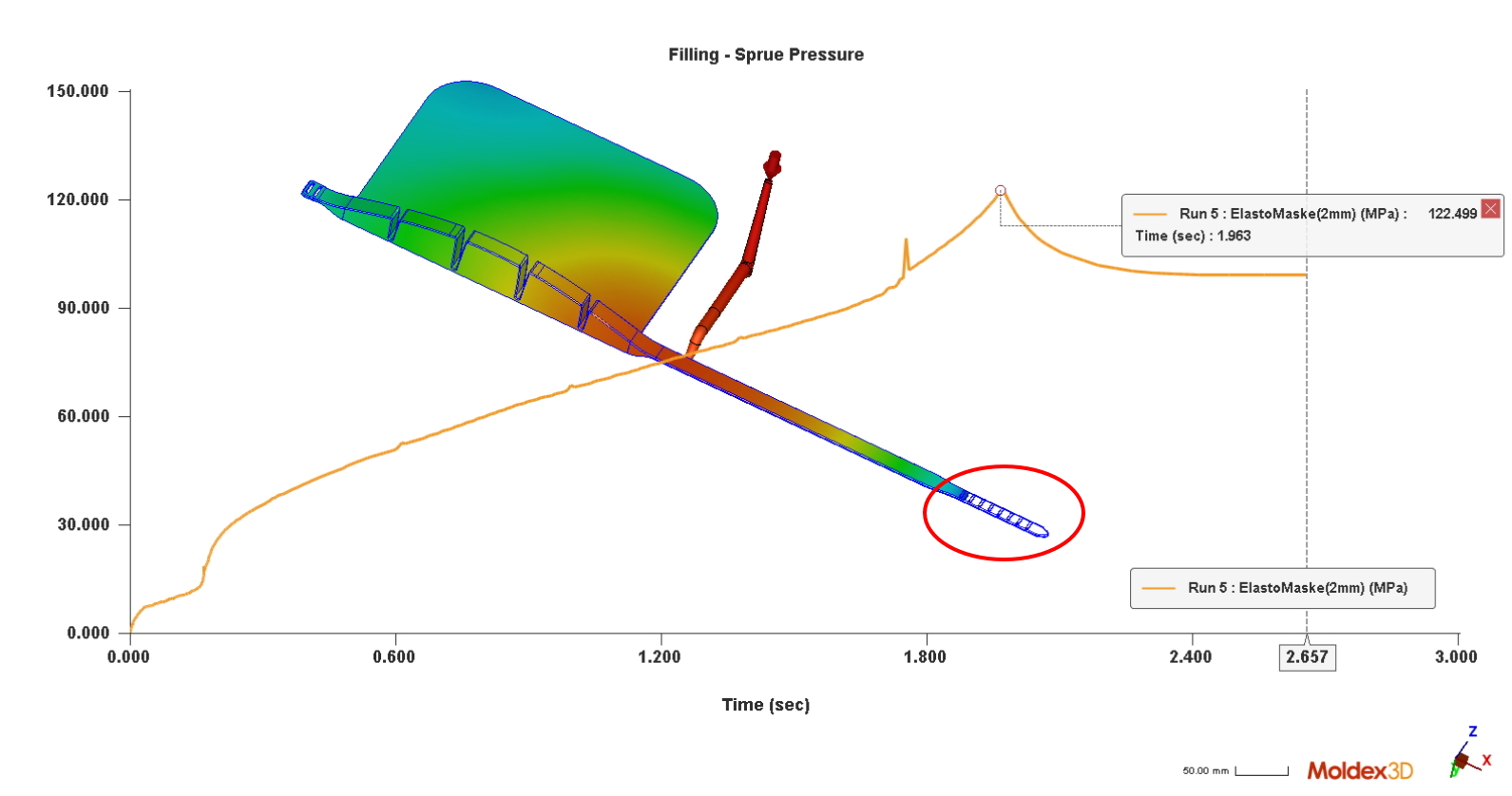
Next, they introduced a flow leader to provide a better melt distribution along the strap geometry.
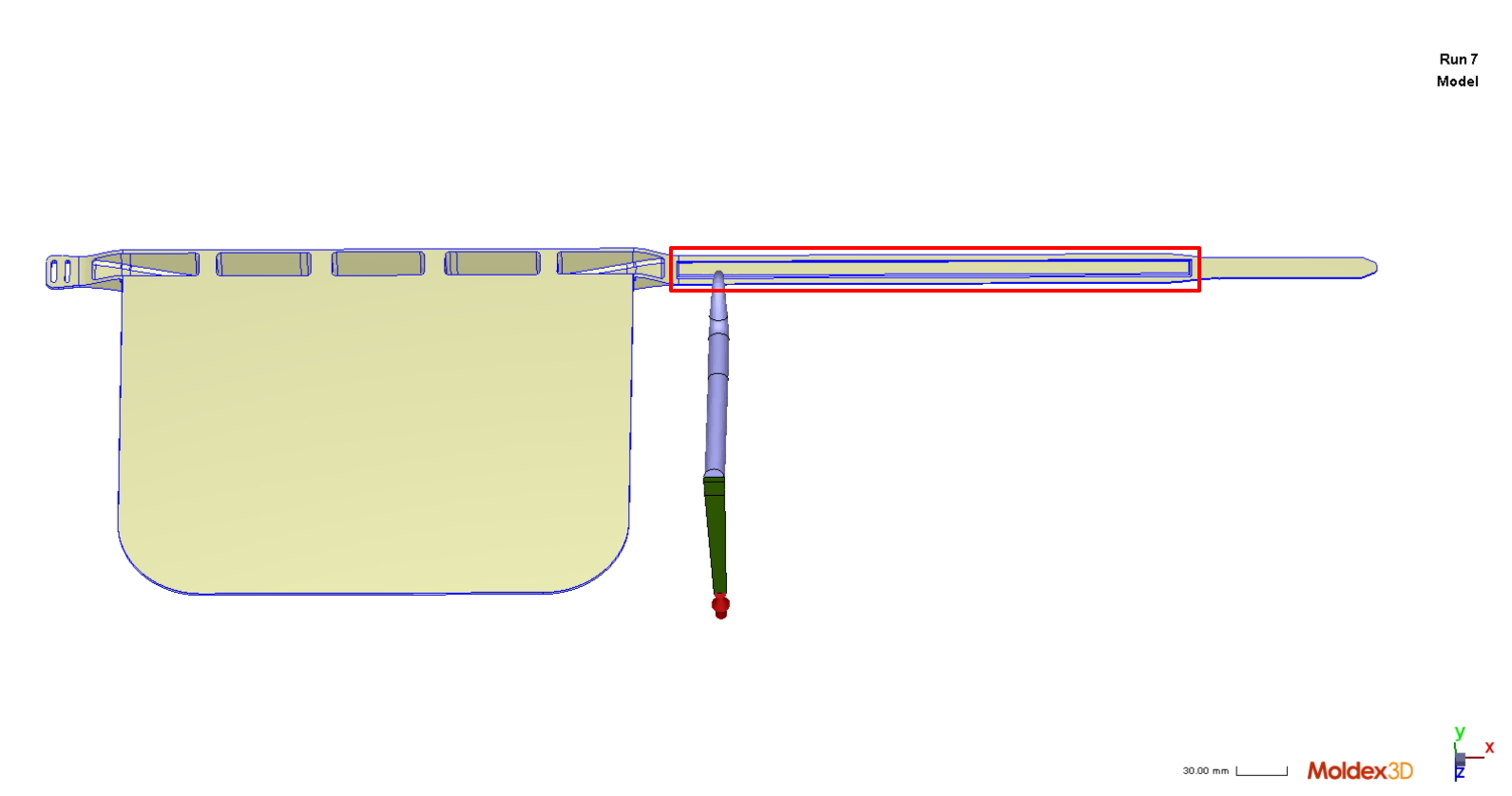
The change resulted in a completely filled cavity, but the sprue pressure value was still quite high and resulted in flow-induced residual stress as well. It could obviously lead to poor optic properties of the newly designed face shield.
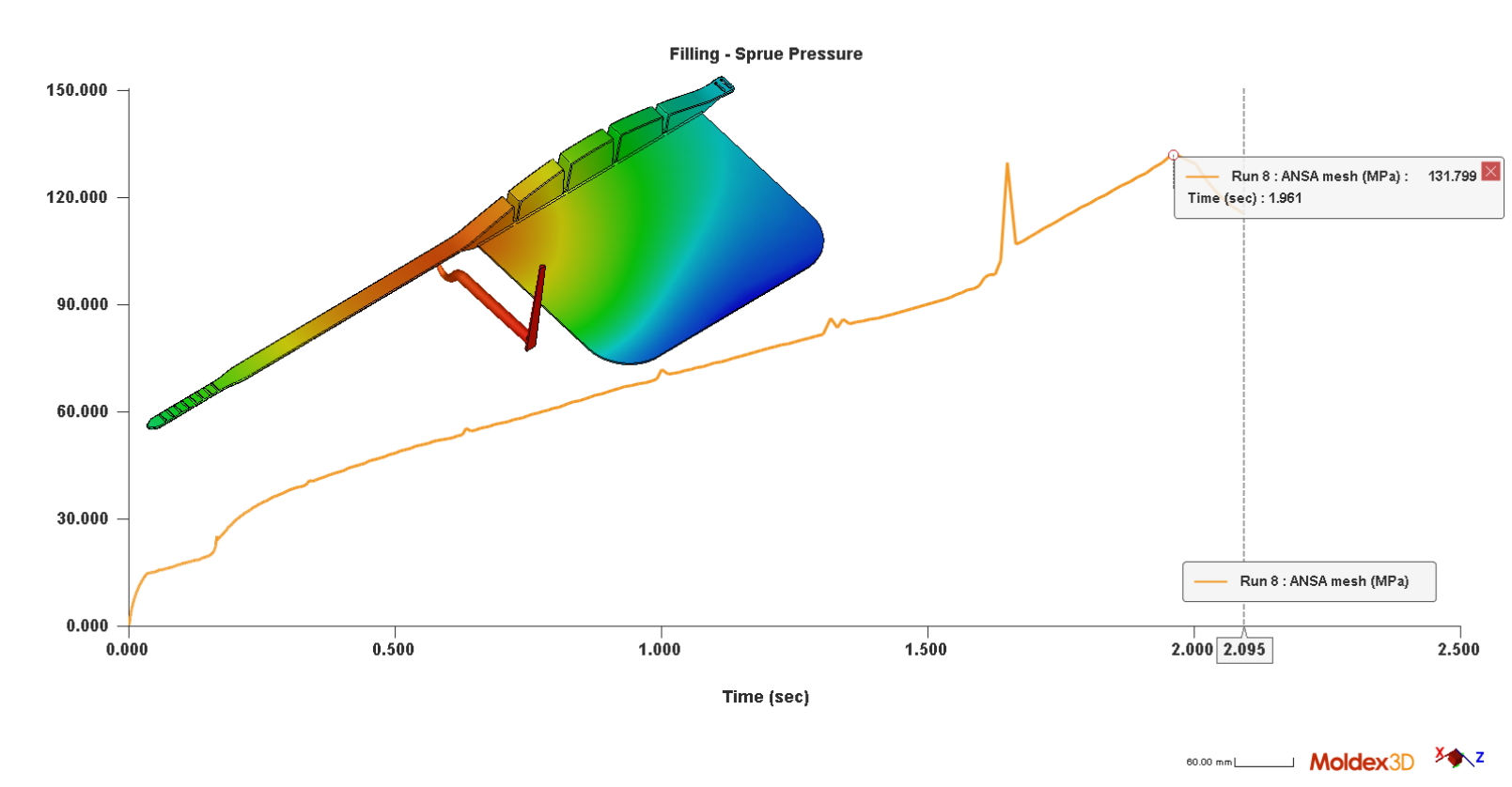
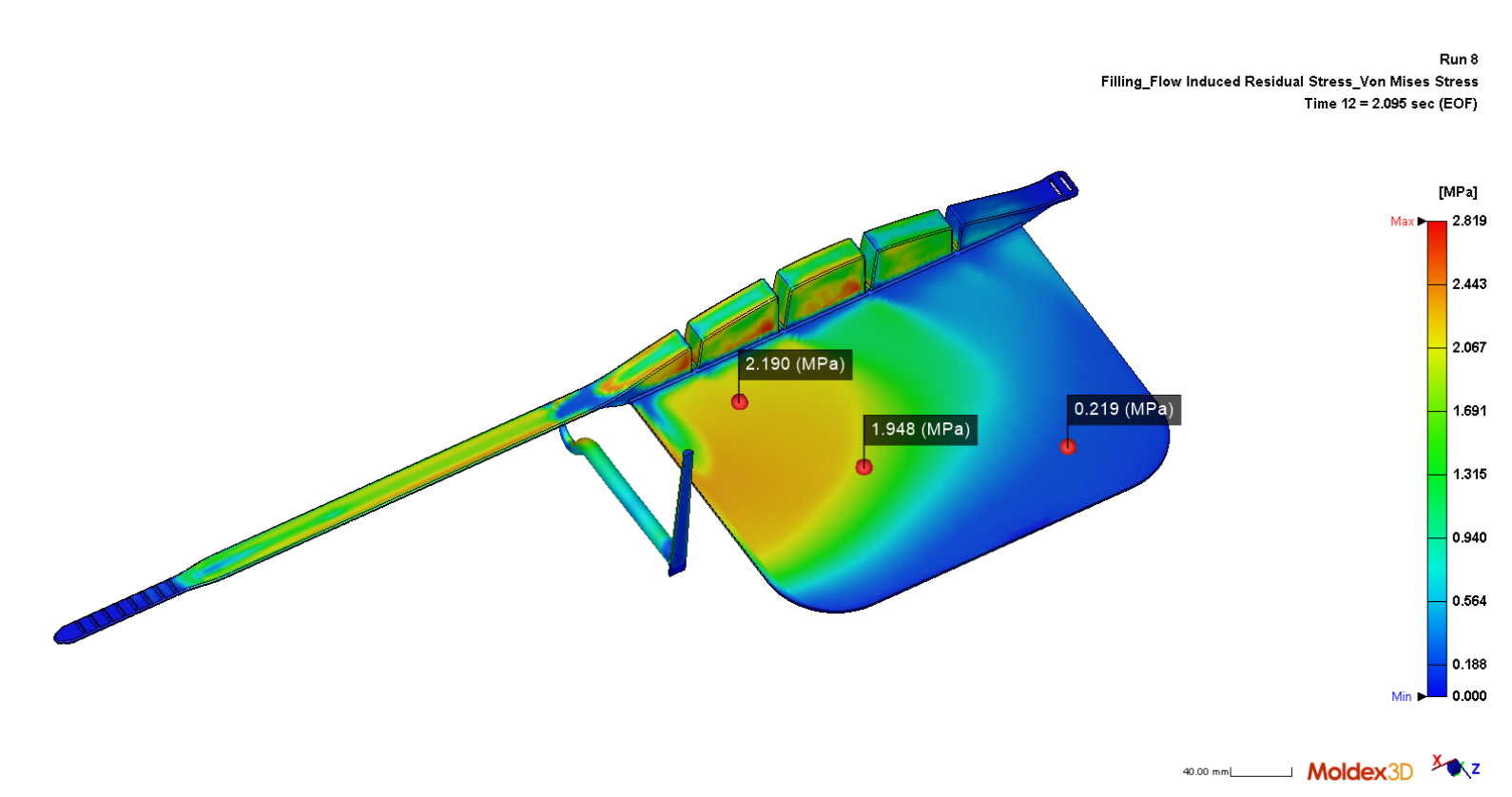
After consulting the material supplier, it was decided to use the less viscous alternative of the TPE that Blackcad was previously using in the simulation. The new hybrid meshed model had been made in ANSA for the Flow, Pack, Warp, and Optics simulation.
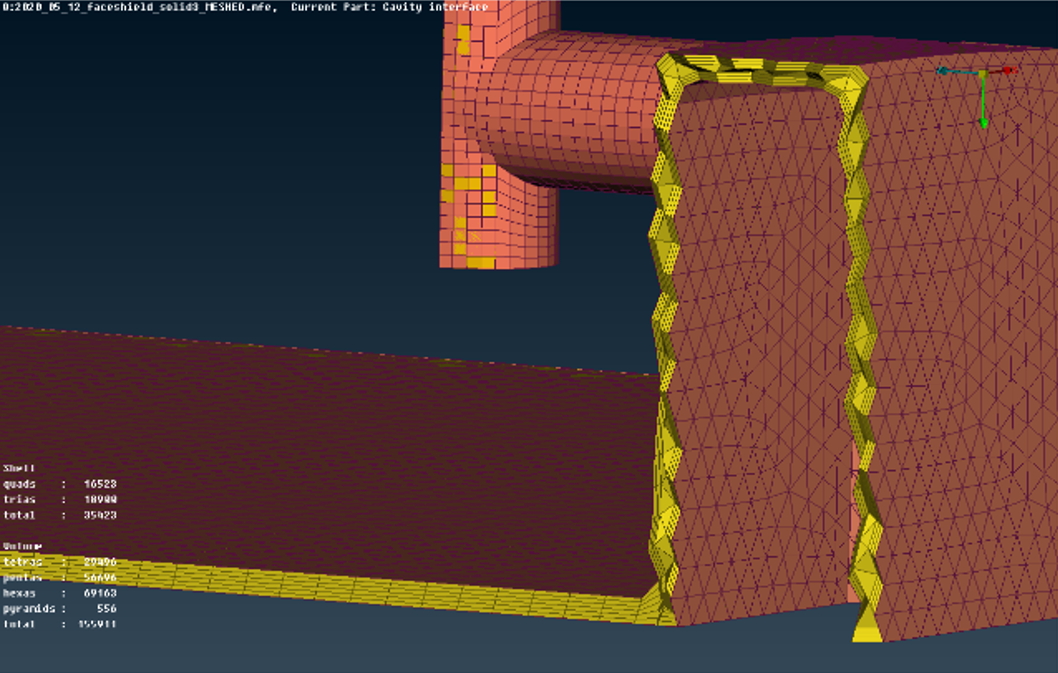
The results showed a list of improvements in sprue pressure, residual stress, and finally optic retardation values.
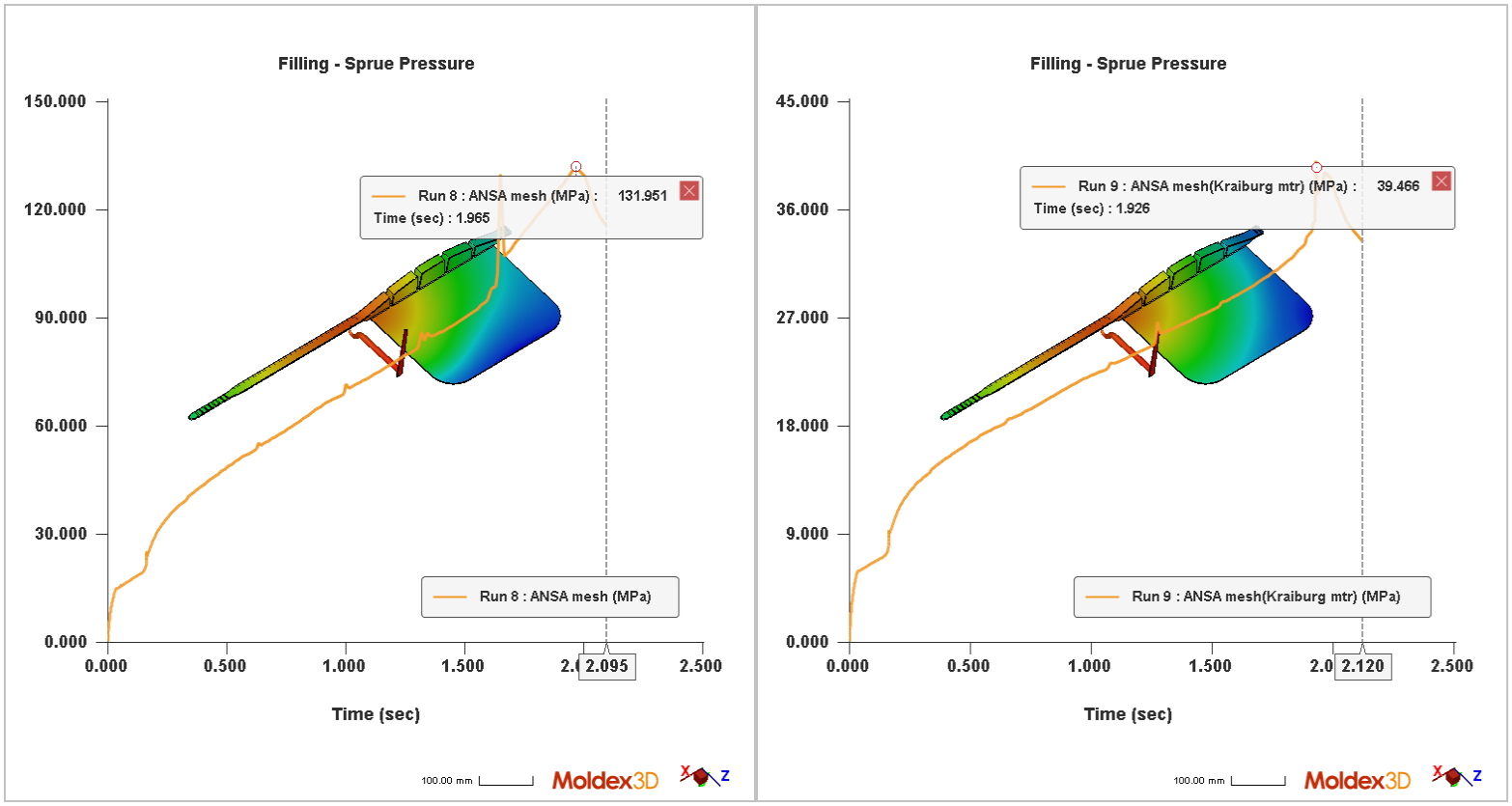
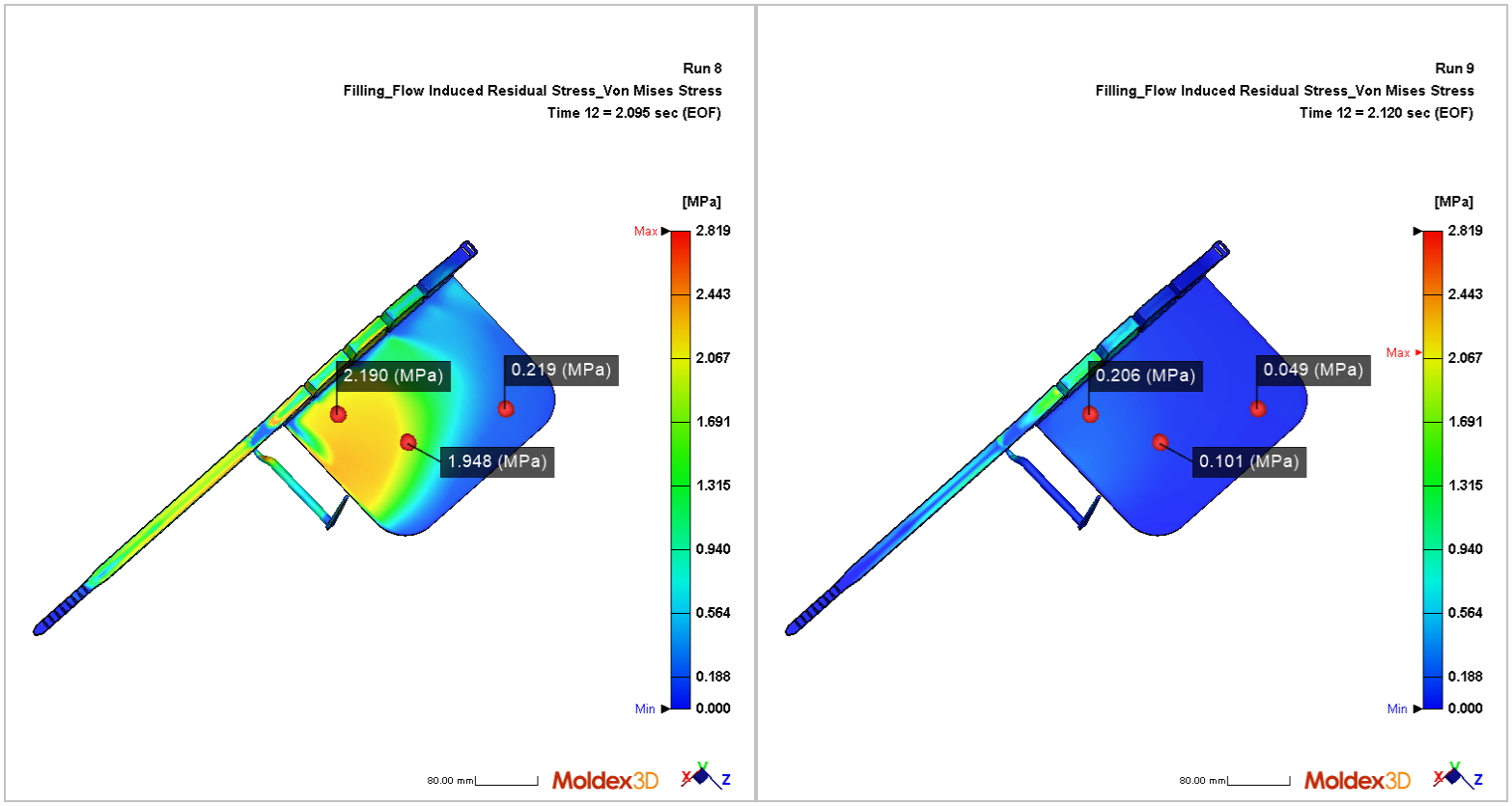
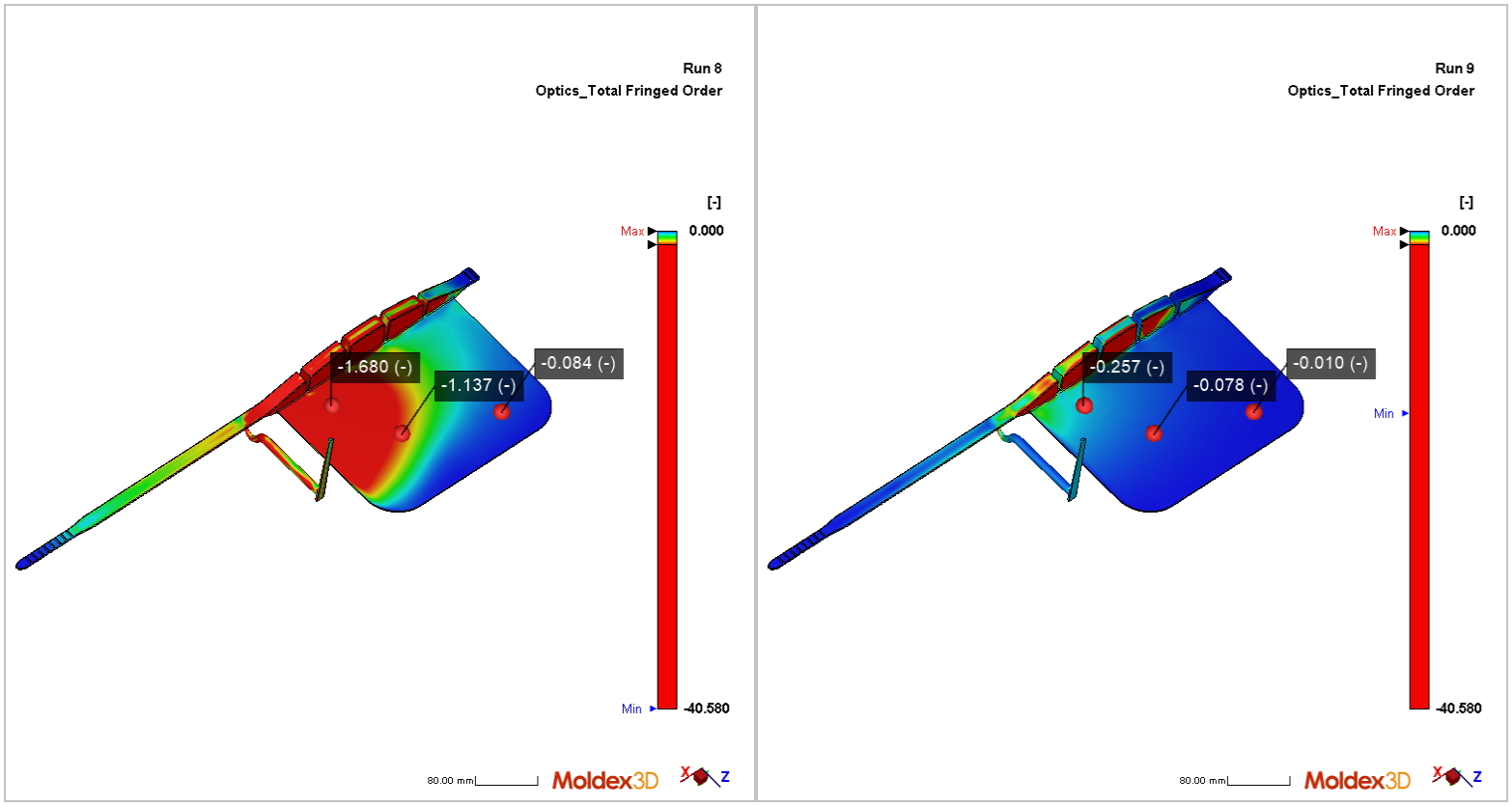
Results
With Moldex3D simulations, Blackcad was able to identify molded parts that could potentially have defects, or might be impossible to manufacture. Additionally, the ability to simulate the part optic properties allows them to foresee any defects already experienced by the end-user, and that may have been induced by typical molding issues. This is an enormous benefit to their customers.
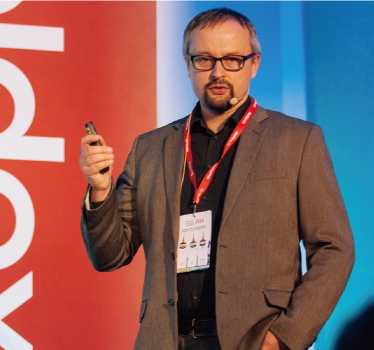 |